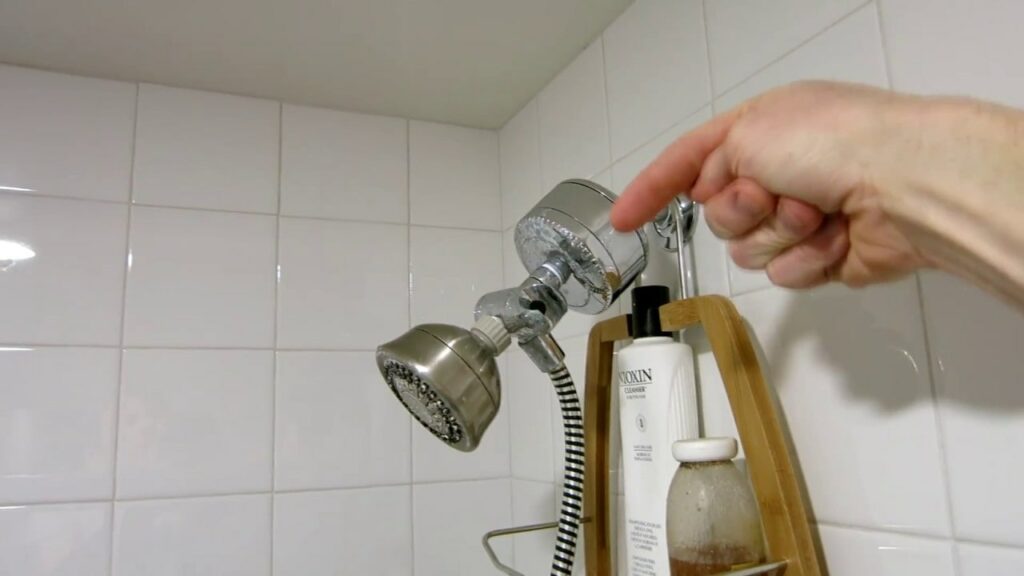Your ability to sleep well is primarily influenced to soften a hard memory foam pillow.
They can be softened and made to feel cosy as you sleep.
In addition, you will understand what makes these pillows firm and how memory foam and normal pillows differ from each other.
Continue reading for advice to soften a memory foam cushion if you have a really stiff one.
So, let’s get started!
Why are Memory Foam Pillows Hard?
Before discussing to make it softer, let’s first examine the causes of stiffness in your pillow.
Since manufacturers strike a balance between firmness and conformability, memory foam pillows are often difficult to make.
And keeping the perfect balance depends on selecting the proper materials for the building of pillows.
Memory foam pillows are mostly memory foam.
The visco-elastic polymers used to make memory foam are naturally stiff.
If you look at a memory foam cushion under a microscope, you will find taught fibers that contract in cold temperatures and expand in heat or under pressure.
And if you have a habit of sleeping on pillows made of different materials like cotton or feathers, this can also make your memory foam cushion stiffer.
It may take some time for your body to adjust to memory foam pillows that can be extremely uncomfortable.

Do Memory Foam Pillows Soften Over Time?
Do you often worry about whether your current firm memory foam pillow will eventually become soft and comfortable?
Over time, memory foam pillows soften as the more you sleep on the pillow, the softer it gets.
The only difference between lying on it and applying pressure is that the latter takes longer.
You will experience a remarkable softening during the first few days of use.
All you have to do is wait patiently for it to soften naturally.
Your memory foam pillow may be of poor quality if it does not soften with use, therefore you may want to purchase a replacement.
So, should you patiently wait days for your high-quality memory foam cushion to soften?
There are techniques for hasty braking in your cushioning process. We’ll talk about this more later in this article.
How To Tell If Your Pillow Is Too Firm?
Knowing if your memory foam pillow needs to be soft is not that difficult. The first sign that your pillow needs repair is if you don’t feel comfortable resting your head on it.
The head, neck, or shoulder area experiencing pain or tension is one of the most noticeable signs.
Another symptom is restlessness, which frequently disrupts sleep.
Having said that, extremely soft pillows are also not recommended as they force the head to rest in an awkward position, which can be uncomfortable or even dangerous.
Have you ever gone to bed and then woke up with neck or shoulder pain but no idea what caused it? You might have used a cushion that was either too firm or too soft.
High-quality pillows are made from memory foam, even if they feel firm at first. As they provide full support, they ensure that both the neck and the head are properly positioned.
Additionally, they are made to endure the test of time. These pillows will not wear out quickly and do not need to be replaced.
6 Ways to Soften a Memory Foam Pillow:
1. Apply pillow pressure before bed:

Although some individuals may not think that this strategy works, it definitely does.
The fibers in the cushion relax under pressure, making it softer.
A memory foam cushion softens when pressure is applied over a few minutes.
Here’s a thorough explanation of how to do it:
- Place the pillow as flat on the floor as possible.
- A broom handle or other blunt instrument can be used to hit the pillow three to four times. Continued use could result in the cushion losing its shape, so stop now. Using your hands is another option.
- Alternatively, you can allow the child to jump on it repeatedly. To maintain uniformity, be sure to flip the pillow over to the other side as well.
Apply more pressure to the hard part of the pillow so that it becomes soft throughout. You can try it again if it is not as soft as you would want.
Using this technique, you can soften a memory foam cushion in minutes. The fact that no special tools are needed is the best aspect.
2. Stuff it:

While you wait for the pillow to gradually soften, you can stuff it with soft material to make it more comfortable to sleep on.
For this, put some soft material like cotton on one side of the pillow and place it inside the pillow.
Others that can be used as filling include feathers and polyester. Use whatever you have at home, such as used towels or clothes, if you can’t find them.
To prevent the material from becoming tight and uncomfortable to sleep on, make sure it is evenly distributed.
Also, use clean materials. Dirty or out-of-date materials can cause allergies or restrict breathing.
Additionally, stay away from bulky materials like denim, which are uncomfortable and rough.
Keep in mind that this approach functions best when combined with others, such as applying pressure or heat. This should only be a temporary fix.
3. Keep the pillow in a warm environment:

The quickest and easiest way to soften a memory foam pillow is to heat it.
These pillows respond differently to temperature, stiffening in the cold and softening in the warm.
In cold weather, memory foam pillows can become very stiff. For example, if you go out for a week and the thermostat doesn’t work the whole time, you’ll find that the pillow is too firm when you come back.
In this situation, turning on the thermostat should fix the issue. Additionally, the low temperatures of winter make these pillows hard. They harden when exposed to cold water.
Although raising the temperature in your room is a good technique to soften the pillow, the process takes a while, so you may have to wait a while.
Utilizing an electric blanket is the most effective course of action. The process is simple. Take a blanket and turn the pillow over.
Allow about 15 minutes for the walk. You can heat the pillow in other ways if you don’t have an electric blanket. One is to put it close to a heater or radiator.
Another is to cover the pillow with a towel and iron it.
Other options include placing the pillow near a heat source or placing a hot water bottle on it for about 15 minutes.
The latter method requires caution, however, as you run the risk of fire.
Keep in mind that drying these pillows in a dryer is not recommended as excessive heat can damage them.
Additionally, avoid washing them in the machine to avoid damaging the inner stuffing. Use your hands, then let the pillow air dry.
4. Leave it out for a while:

Another way to heat is to leave the pillow outside in the sun. It’s simple and doesn’t require any extra tools. Simply take the pillow outside and set it in a sunnier location.
Turn it over after a while to make sure all sides are exposed to the sun. Aside from softening the mattress, keeping it outside has other benefits.
For example, it allows air to pass through and eliminates odours that build up over time.
Avoid leaving it out in the sun for too long since the color can fade.
Three to four oughts to be sufficient.
5. Increase body temperature:
When you sleep on a pillow and raise your body temperature, the pillow absorbs heat and loosens up.
Before going to sleep, you can move to increase your body temperature. You can do some jumping jacks or engage in any other exercise that you find comfortable.
A good technique to raise body temperature is to have hot soups or drinks.
Initially, it may seem tedious to try to warm up each time you want to go to sleep.
The good news is that since the pillow will eventually lose its hardness, you don’t need to do it constantly.
6. Use it regularly:

It will take you a few days to get used to using a memory foam cushion before you feel comfortable.
However, it gets better the more you use it. You need to be patient and wait for the pillow to soften after several uses.
It will take a long time, but the weight of your head is enough to soften it. Its fibres become more flexible and comfortable as a result of regular use, which is necessary if you want to enjoy your sleep.
So, if stiffness doesn’t bother you, you can wait for time to do its job. Take your pillow back if you dug it because it was too firm because it will soften with use.
Besides using it to support your head while you sleep, it has other uses. This includes arching your back or putting your feet up while sitting.
The idea here is to apply as much pressure as possible.
The fact that these pillows are manufactured of high-quality materials is their best quality. As a result, even after they soften, they continue to be heated.
Even after many hours of use, they do not lose their firmness beyond a certain point, so they do not become too soft and stop performing their intended functions.
This means you won’t need to replace it after years of use. Pillows are often too soft, with some low-quality materials.
What is the Difference Between Memory Foam and Regular Pillows?
Pillows made from memory foam are often incredibly strong and tend to stay that way for a long time.
Regular pillow’s firmness is mostly influenced by the material used in their construction.
Most of them are not so rigid and do not change in response to changes in pressure or temperature.
Additionally, memory foam pillows are more tolerable for allergy sufferers, especially those with respiratory allergies.
They don’t hold dust like traditional pillows, which is one explanation for this.
Additionally, memory foam pillows are easier to clean than standard pillows because they are typically not encased.
Also read: How to Break in a New Mattress?
FAQ- How to Soften a Hard Memory Foam Pillow?
Q1. Can Memory Foam Pillows Cause Neck Pain?
According to a 2020 study, latex and memory foam make the best types of pillows for neck pain.
This is due to the fact that this material supports the neck, which can increase sleep efficiency.
Q2. Can memory foam be reshaped?
Memory foam returns to its original shape within seconds.
Your memory foam mattress will conform to the pressure and weight of your body as you sit or lie down.
Around your hips, for example, the mattress is likely to sag deeper.
Q3. Can you wash memory foam cushion in the washer?
Memory foam usually needs to be cleaned by hand as machine washing can cause it to break down.
But unlike other types of pillow fill, memory foam typically has hypoallergenic qualities that prevent the growth of mold, dust mites, and other allergens, so it doesn’t require frequent deep cleaning.
Also read: How To Cut a Memory Foam Mattress?
Conclusion:
This can be incredibly uncomfortable, and if your pillow is too firm, it can impair your ability to sleep.
Fortunately, there are ways to soften and enhance the comfort of your pillow.
Simply apply pressure or heat to it and it will soften to your liking.
Memory foam pillows have many benefits and derive in a variety of varieties with different qualities that you may need.
So, don’t avoid these pillows because they are hard initially.










